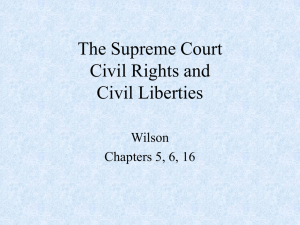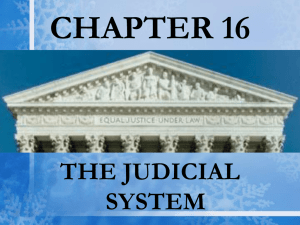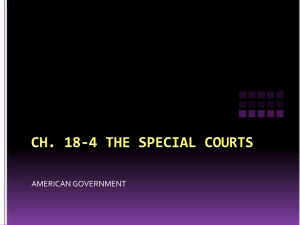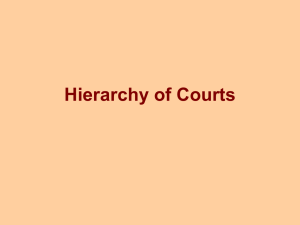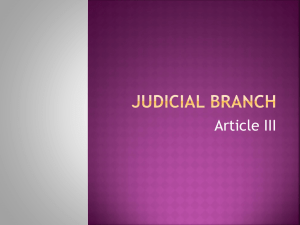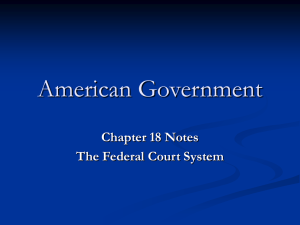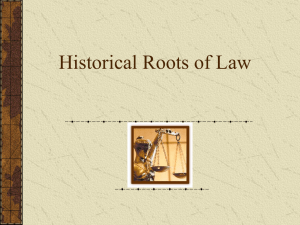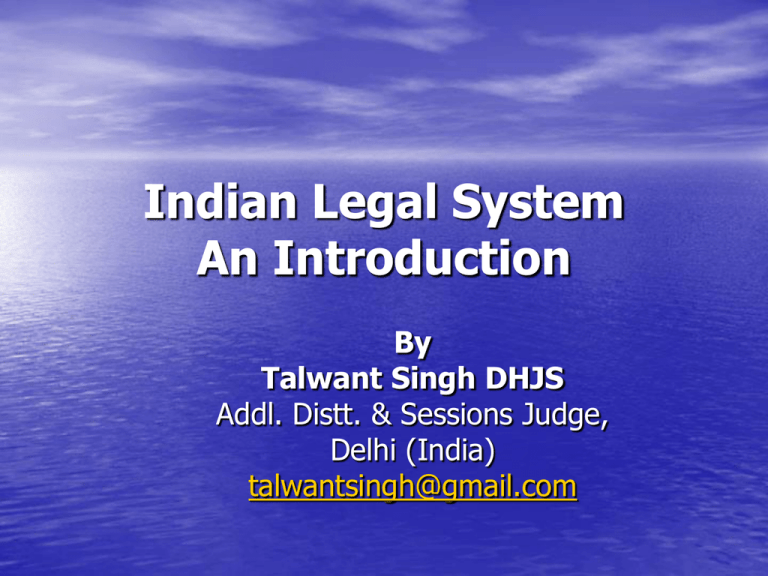
Indian Legal System
An Introduction
By
Talwant Singh DHJS
Addl. Distt. & Sessions Judge,
Delhi (India)
talwantsingh@gmail.com
Indian Legal System
• Indian law refers to the system of law
which operates in India.
• It is largely based on English common law.
• Various Acts introduced by the British are
still in effect in modified form today.
• Much of contemporary Indian law shows
substantial European and American
influence.
History of Indian law
• Ancient India represented a distinct
tradition of law.
• India had an historically independent
school of legal theory and practice.
• The Arthashastra, dating from 400 BC,
and the Manusmriti, from 100 AD, were
influential treatises in India.
• Manu's central philosophy was tolerance
and pluralism, and was cited across
Southeast Asia.
Source of Law
• Primary Source:
a. The primary source of law is in the
enactments passed by the Parliament or
the State Legislatures.
b. The President and the Governor have
limited powers to issue ordinances.
c. These ordinances lapse six weeks from
the re-assembly of the Parliament or the
State Legislature.
Source of Law Cont.
• Secondary Source:
a. Secondary source of law is the
judgments of the Supreme Court, High
Courts and some of the specialised
Tribunals.
b. The Constitution provides that the law
declared by the Supreme Court shall be
binding on all courts within India.
Constitution of India
• The Constitution declares India to be a
sovereign socialist democratic republic,
assuring its citizens of justice, equality,
and liberty.
• It is the longest written constitution of any
independent nation in the world.
• It contains 395 articles and 12 schedules,
as well as numerous amendments, for a
total of 1,17,369 words in the English
language version.
Preamble of the Constitution
• We, the people of india,
• Having solemnly resolved to constitute India into a
•
•
•
•
•
sovereign socialist secular democratic republic and to
secure to all its citizens:
Justice, social, economic and political;
Liberty of thought, expression, belief, faith and
worship;
Equality of status and of opportunity;
And to promote among them all:
Fraternity assuring the dignity of the individual and
the unity and integrity of the nation.
Fundamental Rights
• Equality before the law.
• Freedom from discrimination on grounds of religion,
•
•
•
•
•
•
race, caste, sex or place of birth.
Equality of opportunity in matters of public
employment.
Freedom of speech and expression.
Right to assembly peacefully without arms.
Protection against deprivation of life and personal
liberty.
Freedom of conscience and the profession, practice
and propagation of religion.
To move freely through India, to reside and settle in
any part of India.
Fundamental Duties
• Added to the Constitution in 1977.
• To abide by the Constitution.
• Respect its ideals and institutions, the National Flag
•
•
•
•
and the National Anthem.
To value and preserve the rich heritage of our
composite culture.
To protect and improve the national environment
including forests, lakes, rivers and wild life.
To have compassion for living creations.
To strive towards excellence in all spheres of individual
and collective activity.
Criminal law
• Indian Penal Code (IPC) provides a penal code
for all of India including Jammu and Kashmir,
where it was renamed the Ranbir Penal Code
(RPC).
• The code applies to any offence committed by
an Indian Citizen anywhere and on any Indian
registered ship or aircraft.
• Indian Penal Code came into force in 1862
(during the British Raj) and is regularly
amended, such as to include section 498-A.
Civil Procedure Code
• The Civil Procedure Code (C.P.C.) regulate the
•
functioning of Civil courts.
It lays down the:
- Procedure of filing the civil case.
- Powers of court to pass various orders.
- Court fees and stamps involved in filing of case.
- Rights of the parties to case (plaintiff & defendant)
- Jurisdiction & parameters of civil courts functioning.
- Specific rules for proceedings of a case.
- Right of Appeals, review or reference.
Family law
• Indian civil law is complex, with each
religion having its own specific laws which
they adhere to.
• After independence Indian laws have
adapted to the changing world.
• The most recent being the Domestic
Violence Act[2005].
Industrial and Labour Laws
•
•
•
•
•
•
•
•
•
•
The most notable laws are as follows:
Industrial Dispute Act, 1947
Wages Act, 1948
Employees State Insurance Act, 1948
Employees Provident Fund and Miscellaneous
Provisions Act, 1952
Beedi and Cigar workers Act, 1974
Equal Remuneration Act, 1976
Contract Labour Act, 1970
Child Labour Act, 1986
Bonded Labour System Act, 1976
The Employee’s Provident Funds Act, 1952
The Act shall apply to:
• every establishment which is a factory
• engaged in any industry mentioned in
schedule I of the Act and
• employing 20 or more persons or
• any other establishment employing twenty
or more persons or
• such other establishment as the Central
Government may notify.
Right To Information Act, 2003
• The Right to Information emerges out of the umbrella
•
•
•
of Right to Freedom of Speech and Expression and
Right to Life.
Right to Information is also the centrifugal point for
access to myriad other basic human rights such as
environment, health, food, livelihood etc.
The most direct transformation that the right to
information effects is in the governance system.
From the perspective of citizenship, right to
information is the primary tool in the hands of the
citizen.
Writs
The Writs are issued by the Supreme Court
under Article 32 and by the High Courts under
Article 226 of the Constitution of India.
Types of Writs:
• Writ of prohibition
• Writ of habeas corpus
• Writ of certiorari
• Writ of mandamus
• Writ of quo warranto
Indian Judicial System
• The three-tiered system of Indian judiciary
comprises of Supreme Court (New Delhi) at its
helm;
• High Courts standing at the head of state
judicial system;
• Followed by district and sessions courts in the
judicial districts, into which the states are
divided.
• The lower rung of the system then comprises
of courts of civil (civil judges) & criminal
(judicial/metropolitan magistrates) jurisdiction.
The Supreme Court
• On the 28th of January, 1950, the Supreme
Court came into being.
• The judges of the Supreme Court at the time
of inauguration were Chief Justice Harilal J.
Kania and Justices Saiyid Fazl Ali, M. Patanjali
Sastri, Mehr Chand Mahajan, Bijan Kumar
Mukherjea and S. R. Das.
• The first Attorney General for India was Mr.
M.C. Setalvad.
The Supreme Court
• The Supreme Court of India comprises the Chief
•
•
•
•
Justice and not more than 25 (30) other Judges
appointed by the President of India.
The proceedings of the Supreme Court are conducted
in English only.
The Registry of the Supreme Court is headed by the
Registrar General.
The Attorney General for India is appointed by the
President of India under Article 76 of the Constitution.
Three types of Advocates: SENIOR ADVOCATES,
ADVOCATES-ON-RECORD &OTHER ADVOCATES .
The High Courts
• The High Courts are generally the last court of
regular appeal.
• Besides, for invoking writ jurisdiction, the High
Courts can be approached for enforcement of
other rights.
• It has the power to supervise the subordinate
courts falling within its territorial jurisdiction.
• The High Courts are Courts of Record.
• The High Courts also exercises original
jurisdiction under the Companies Act.
The High Courts Cont…
• The High Court hears First Appeals from the decisions
•
•
•
of the District Courts.
Section 100 of the Code of Civil Procedure provides for
a Second Appeal from Appellate decrees.
Under Section 115 of the Code, the High Court is
conferred wish revisional jurisdiction.
Under Article 227 of the Constitution also, the High
Court in the exercise of its powers of superintendence
entertains revision petitions to correct errors on the
part of lower Courts and Tribunals in Judicial & Quasi
Judicial matters.
The High Courts Cont…
• On the Criminal side, the High Court has to confirm all
•
•
•
sentences of death passed by Courts of Sessions and
hear References in this behalf.
High Court hears Criminal Appeals from convictions
awarded by Sessions Judges and Additional Sessions
Judges or from the judgment of any other Court,
where a sentence for more than seven years
imprisonment has been passed.
The High Court is also empowered to entertain
appeals from orders of acquittal passed by any Court.
High Court has also been conferred with Criminal
Revisional Jurisdiction.
The Subordinate Courts
• This subordinate Courts are:
• (a) District Courts, empowered to hear appeals
from courts of original civil jurisdiction besides
having original civil jurisdiction
• (b) Sessions Court is courts of criminal
jurisdiction, having the similar scope of powers.
• The courts of specific original jurisdiction are
courts of Civil Judges, of Judicial Magistrates;
Small Causes courts & Courts of Metropolitan
Magistrates.
Quasi - Judicial System
• This appendage to the Indian judicial system is
a recent & sincere attempt on the part of the
government to expedite the judicial process
through dilution of procedural formalities &
avoidance of litigation.
• Tribunals form an indispensable part of this
system, which are appointed by the
government and comprise of judges & experts
on the particular field, for which the tribunal
has been constituted.
RECENT TRENDS IN LAW
•
•
•
•
CRIMINAL PROCEDURE CODE
Plea Bargaining in Criminal Cases
Plea bargaining is introduced in India by Criminal Law
(Amendment) Act, 2005.
This affects cases in which the maximum punishment
is imprisonment for seven years.
However, offenses affecting the socio-economic
condition of the country and offenses committed
against a woman or a child below the age of fourteen
are excluded.
RECENT TRENDS IN LAW
CIVIL PROCEDURE CODE, 1908
• MEDIATION & CONCILIATION ENCOURAGED
• NUMBER OF ADJOURNMENTS-3
• SERVICE OF SUMMONS BY OTHER MEANS
• EVIDENCE BY WAY OF AFFIDAVITS
• TIME LIMIT TO PRONOUNCE JUDGEMENTS
NEW TRENDS IN JUDICIARY
• Computerisation of Courts
• Scope of PIL is being limited
• Judiciary has become more open
• Concept of Justice at Door-Step encouraged
• Lok Adalats
• Special Courts to dispose off Petty Cases
• Evening Courts started in many States
Legal Education
At present there are two educational options
for would-be Law graduates in India.
• One is a five year program, to which one can
be admitted after passing a school-leaving
examination taken after completion of 10+2.
• The other is a three year program available
only to those who have already graduated with
a degree in Arts, Science or Commerce.
Are you aware that...
• About two-thirds of our laws have not been used in
•
•
•
independent India.
About 10 per cent of them can be scrapped right
away.
And most of the 10 per cent in use currently have so
many obsolete and conflicting provisions.
The oldest law in the country has been in operation
for over a century and half. The one sentence 1836
Bengal District Act empowers the Bengal government
to create as many zillas as it wants. The Act still
exists.
Are you aware that... Cont…
• Under the Indian Sarais Act, 1867, it is a
punishable offence for ‘inn-keepers’ not to offer
free drinking water to passer-by.
• Only about 40 per cent of our laws are in
regular use. Independent India has till now
found no conceivable use for the rest.
• While India badly needs efficient laws, the time
spent by the law-making body on the job is
unbelievably little.
• Parliament spends less than 0.6 per cent of a
Lok Sabha day on law-making.
THANKS
Interesting Legal websites:
• www.indlii.org
• www.judis.nic.in
• www.indiacode.nic.in
• www.delhicourts.nic.in
• www.legalbasket.com
• www.indiacyber.net
• www.supremecourtofindia.nic.in
In case of any suggestion/clarification,
Please mail at: talwantsingh@gmail.com



